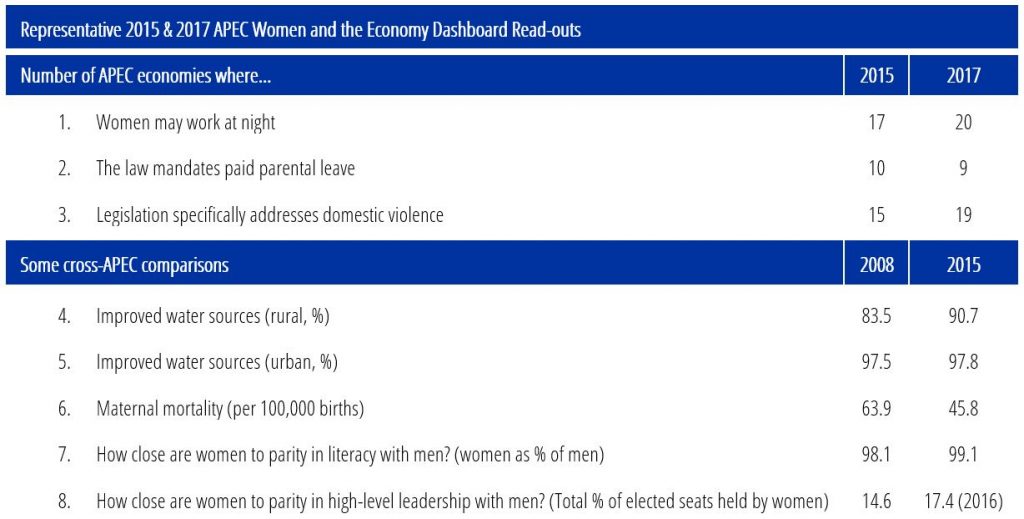- October 15, 2017
APEC’s Women and the Economy Dashboard, which tracks, measures, and communicates progress in women’s economic participation across APEC’s 21 member economies, reached a milestone in September with the 2017 release.
The 2017 Dashboard contains the first biannual data update since APEC’s Policy Support Unit (PSU) entered baseline information two years ago. The new data show both progress and backsliding in women’s engagement in APEC economies since 2015. For example, the number of member economies where women may work in mining has increased, but the number of laws that prohibit sexual discrimination in hiring has declined. In addition, although women remain far behind men at the highest levels of political decision-making throughout the region, their representation as elected officials is gradually increasing in most APEC economies.
The Dashboard is built on a framework of more than 75 economic and social indicators maintained chiefly by international sources. USAID’s US-APEC Technical Assistance to Advance Regional Integration (US-ATAARI) project, implemented by Nathan Associates, developed the framework, which APEC adopted in 2014. The data serves as a guide and an incentive to policymakers seeking to advance women’s economic empowerment.

Even the baseline data motivated sector-specific change. The 2015 Dashboard revealed significant gaps across APEC in the education and career advancement of women in STEM fields. That data prompted development of APEC Women in STEM: A Framework for Dialogue, Learning, and Action, a framework for strengthening conditions for women in STEM.
The Dashboard grew out of discussions at the 2011 APEC Women and the Economy Summit. Participants identified the need to measure women’s economic advancement using data that can be compared across APEC members. Nathan’s US-ATAARI work to develop and help institutionalize the use of relevant, clear, and concrete data in gender planning and programming is fulfilling that need.
Contact: Ann Katsiak

